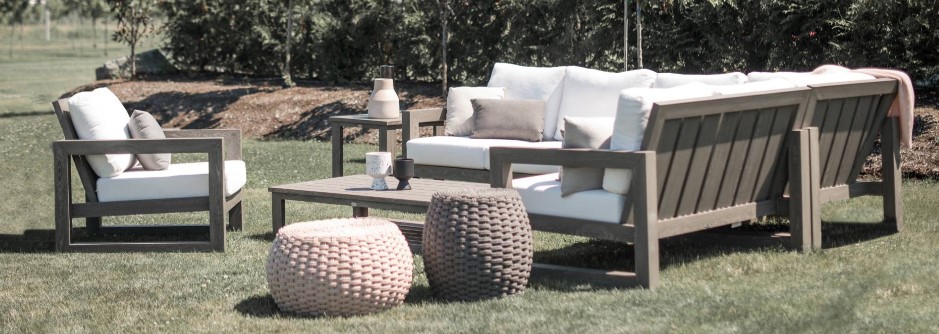Carefree Comfort…
Indoor Foam is most commonly a high- or low-density foam that can easily trap moisture and bacteria. This is not a huge cause for concern, being indoors, but outdoors these types of foams are a recipe for disaster. It is unfortunately very common that some outdoor furniture collections do use these indoor foams and incase them in an “outdoor UV Protected fabric”. Most often than not, these fabrics do not stop moisture from getting inside. After exposed to water or other liquids these foams will start to smell, and ultimately break down and flatten. This environment feels very inviting to rodents and bugs, but not so inviting to friends and family.
For any outdoor application, the best foam you can acquire is reticulated foam. This foam is very porous, very similar to the material used in pool noodles. The foam is open celled, which allows liquids to flow freely and disperse. The openness of the foam gives the moisture a chance to evaporate therefore no mildew, mold, or bacteria can sit dormant.
Another thing to watch for when buying outdoor cushions, is the fabric used to cover your foams. The household brand name for outdoor fabric is most commonly “Sunbrella”. “Sunbrella” is a 100% solution dyed acrylic fiber that is the preferred fabric for boats, umbrellas, awnings, window coverings, and of course, outdoor furniture. Other common names for this type of fabric are “Outdura” or “DuraBella” among others. Acrylic fabric will maintain color, and quality through exposure to outdoor elements.
TIP: Look for removable cushion covers on your outdoor furniture to make washing a breeze and give you the ability to change your cushion colors as trends and preferences change!
To the Naked Eye…
Woven outdoor furniture can look and feel the same through and through. In fact, there is a huge and costly difference when it comes to outdoor furniture. Over the years, manufacturers have excelled in replicating woven designs to be completely indistinguishable from good quality, and bad quality. When purchasing your outdoor furniture, make sure to ask what the woven material is made of. You may be surprised to hear that “plastic” is what is the most utilized material although plastic alone is destined to become brittle and breakdown in the elements.
When outdoor furniture is made to last, it is made with a synthetic cured resin, that is also treated to expand and contract with the cooling and warming temperatures of our climate which will prevent peeling, cracking, or fading of your furniture finish. To avoid re-purchasing your outdoor furniture every couple of years, look for materials that are built to last!
Heavy Metal baby…
The most corrosion -resistant metal is Aluminum which is why it is such a popular frame material for patio seating. But there are some different kinds of aluminum that do make a difference in longevity of your outdoor furniture. Box store aluminum outdoor furniture is typically just made of hollowed-out tubes that are welded together which makes the frame very lightweight, great for storage, but not so great for those windy days, or stormy nights. Cast aluminum on the other hand is molded into its shape, solid through and through gives a substantial, and luxurious feel to your outdoor patio seating.
Faux vs Real Wood furniture
Depending on the humidity level, and sunlight exposure, different types of wood, even if treated, can shrink, and expand in different temperatures. This will cause weakening of your furniture structure. Look for a synthetic type of material called polyethylene that is made to look like real wood. Much like the material used in composite decking. Commonly referred to as “Durawood”, this material is an excellent choice for your outdoor room!
Its time you stepped out of the box, and into your Outdoor Rooms Without Walls!
